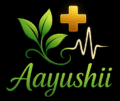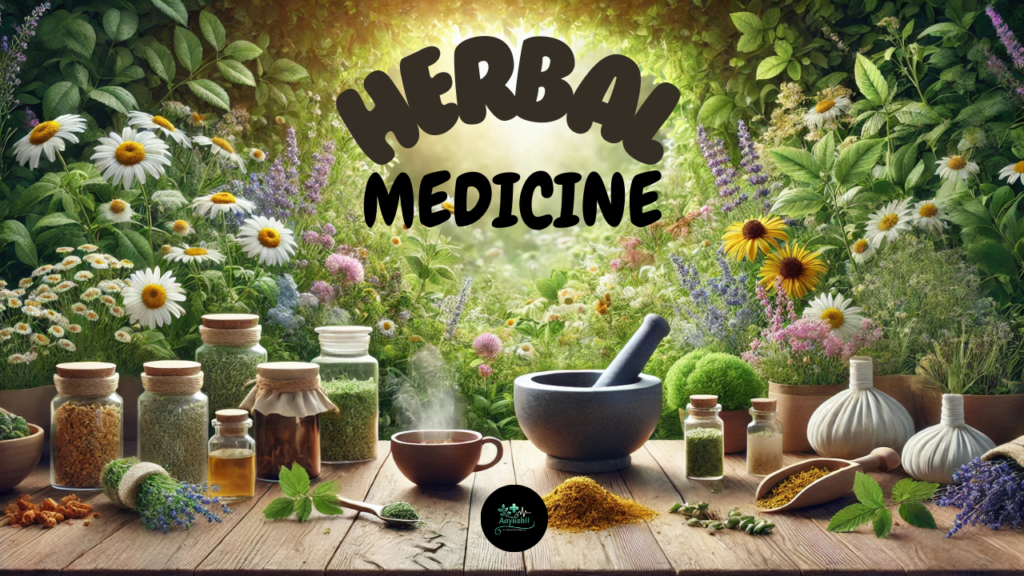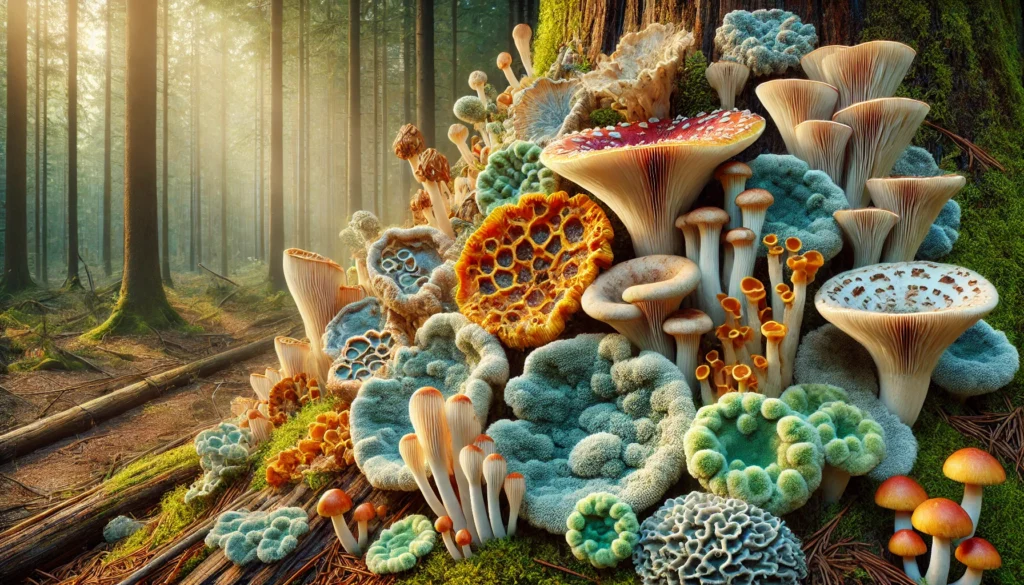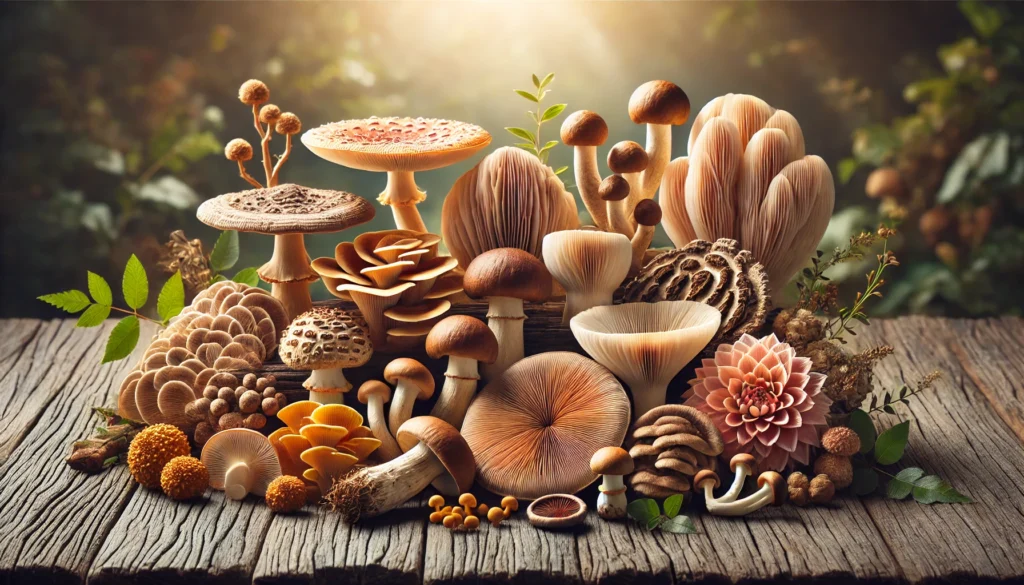Herbal medicine has been an integral part of human health and healing for thousands of years. Across cultures, people have relied on the natural properties of plants to ease everyday ailments, promote wellness, and maintain balance in body, mind, and spirit. In the modern world, the use of herbal remedies is witnessing a renaissance as many individuals seek to reduce reliance on synthetic chemicals and explore gentler, more holistic approaches to health.
In this comprehensive article, we will delve into the fascinating world of herbal medicine. We’ll explore its history, cultural significance, scientific underpinnings, and practical applications for everyday use. We will also unpack the properties of some commonly used herbs, discuss ways of preparing them safely, and look at the best ways to incorporate herbal remedies into your daily routine. Whether you are entirely new to herbal medicine or looking to refine your existing knowledge, this guide provides a detailed foundation that will help you use herbs more effectively and responsibly.
Table of Contents
What Is Herbal Medicine?
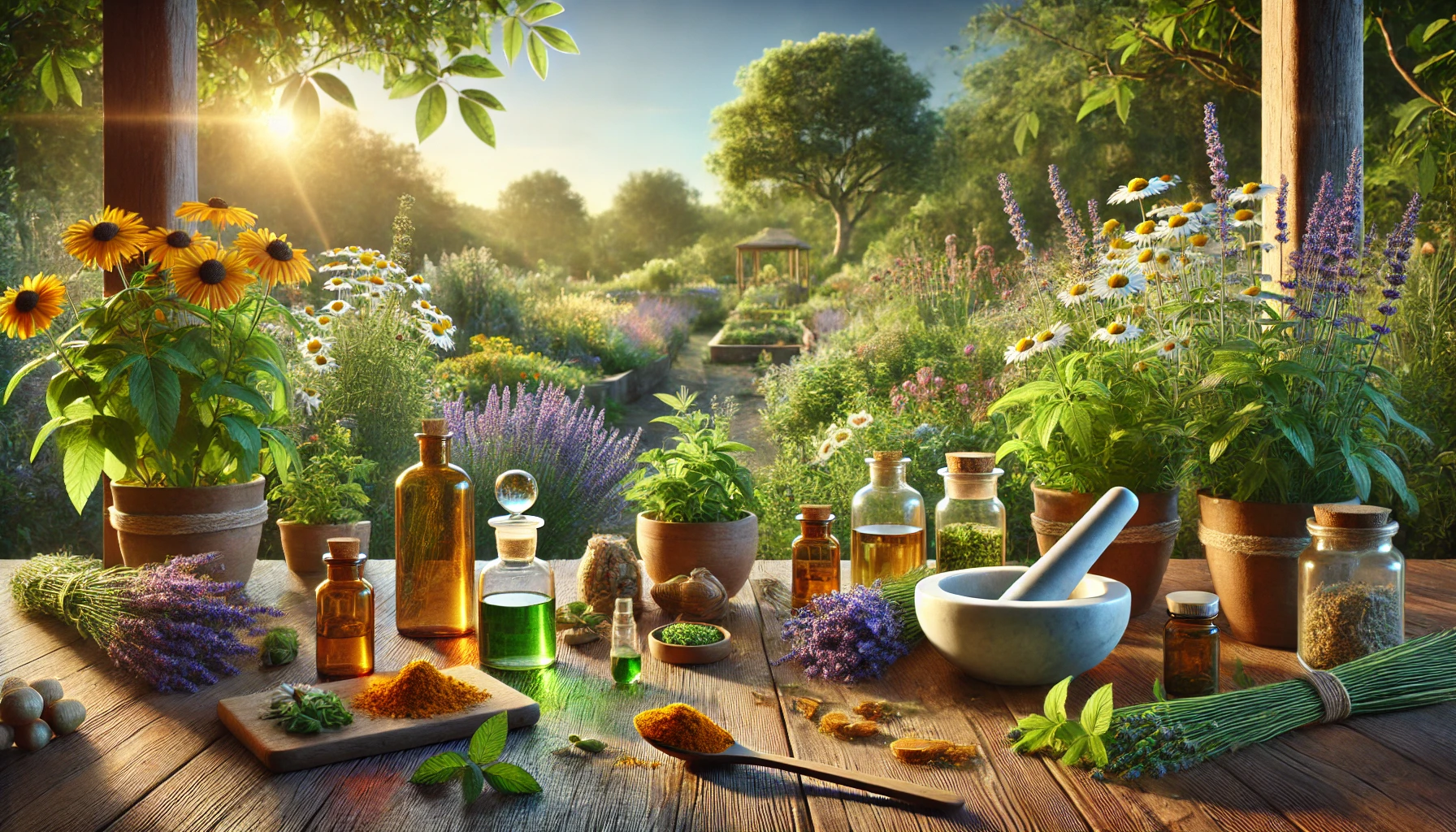
Herbal medicine, sometimes referred to as phytotherapy or botanical medicine, is the practice of utilizing the therapeutic properties of plants to help prevent, alleviate, or cure diseases and ailments. It involves harvesting plant parts—leaves, flowers, roots, bark, seeds, or fruits—and preparing them in various forms like teas, tinctures, oils, ointments, and capsules.
Key Characteristics of Herbal Medicine
- Whole Plant Use: Rather than isolating a single active compound (as is often the case in pharmaceutical medicine), herbal medicine frequently involves using the entire plant or major parts of it. This helps preserve the synergy of all its chemical constituents.
- Holistic Approach: Herbal medicine emphasizes the unity of body, mind, and environment. Treatments often align with restoring balance rather than simply addressing symptoms.
- Traditionally Based, Evolving with Science: Herbal remedies are steeped in tradition, yet modern research increasingly validates the biochemical effects of plant-based compounds. This merging of time-tested knowledge with scientific inquiry strengthens the efficacy and safety profiles of many herbs.
When we talk about herbal medicine, it’s important to acknowledge its roots in traditional healing systems. Many forms of medicine across the globe—like Ayurveda (India), Traditional Chinese Medicine (China), and Indigenous healing practices—have used plants for millennia. Understanding these cultural perspectives offers context for why certain herbs are revered and remain cornerstones of holistic healing even today.
A Brief History and Cultural Perspectives

Herbs have formed the cornerstone of healthcare for centuries. Archaeological evidence suggests that even prehistoric humans used plants for medicinal purposes. Below is a quick overview of how different cultures have contributed to and shaped the field of herbal medicine:
- Ancient Egypt: Egyptian papyri, such as the Ebers Papyrus dating back to around 1550 BCE, document extensive use of medicinal plants (like garlic, juniper, and aloe).
- Traditional Chinese Medicine (TCM): Developed over thousands of years, TCM integrates botanical ingredients in balanced formulas aimed at restoring internal harmony. The legendary text Shennong Bencao Jing lists numerous medicinal herbs.
- Ayurveda: India’s ancient Ayurvedic tradition is among the oldest comprehensive medical systems. It uses many herbs (like Tulsi, Ashwagandha, and Turmeric) to promote holistic health.
- Greek and Roman Influence: Pioneers such as Hippocrates and Galen documented the use of herbs in treatises, further influencing Western Herbalism.
- Native American Medicine: Tribes across the Americas have detailed knowledge of local flora, using specific plants for ailments and for spiritual rituals.
- Middle Ages and Beyond: During the Middle Ages, monasteries and herbal gardens preserved botanical knowledge in Europe. The Renaissance sparked renewed scientific interest in plant-based remedies.
- Modern-Day Revival: Over the last few decades, herbal medicine has seen a resurgence, bolstered by clinical studies, public interest in “natural” solutions, and a growing emphasis on preventive care and wellness.
Each culture’s understanding and methodologies vary, but they often revolve around a shared principle: harnessing nature’s synergy to promote balance and well-being. In the modern context, scientific research is validating many traditional claims and shedding new light on how, exactly, certain plant-based compounds interact with the human body.
The Science Behind Herbal Medicine
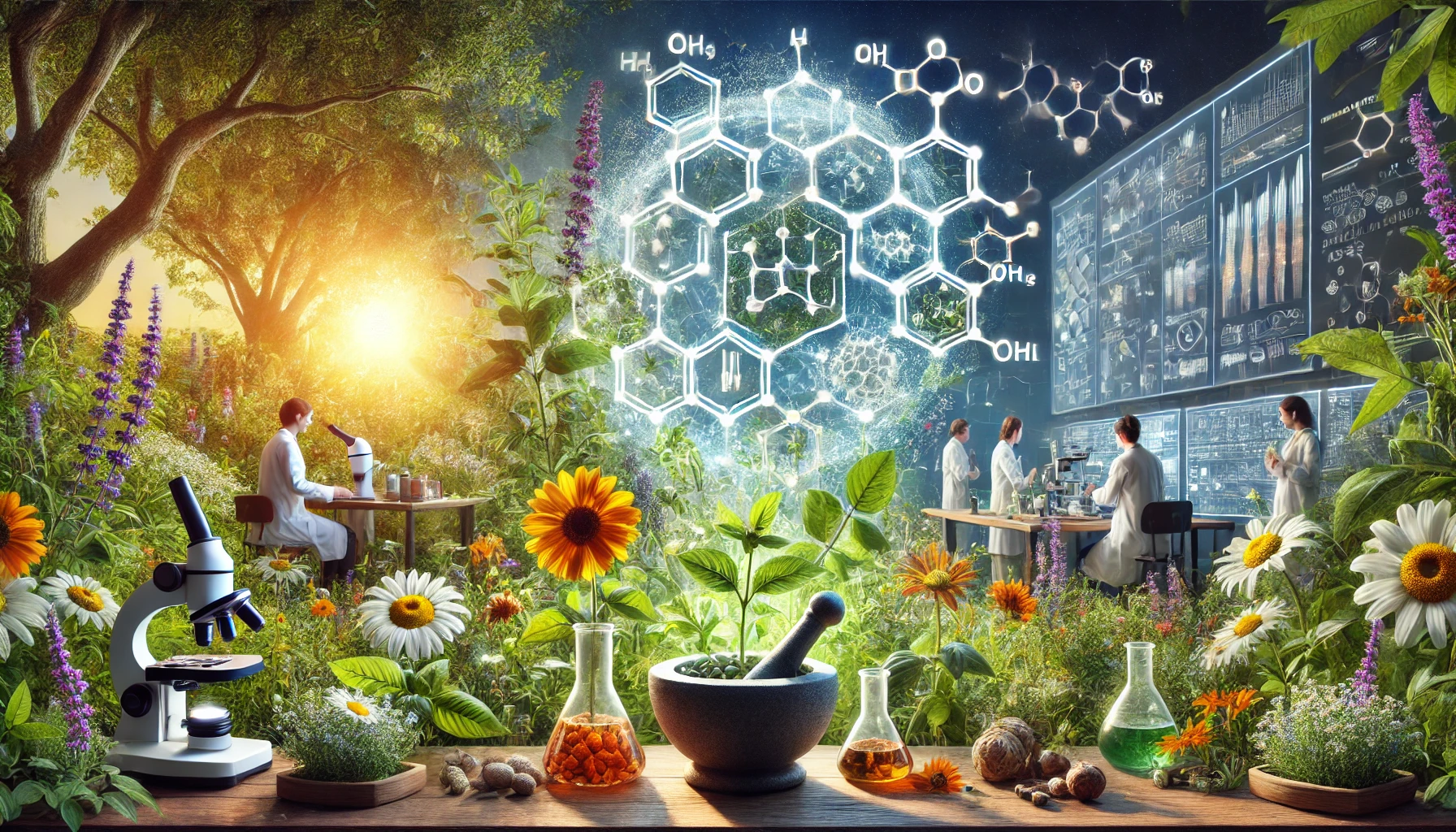
While herbal medicine has historical roots, it’s important to recognize the modern science that increasingly supports these age-old remedies. Phytochemistry—the study of chemical compounds in plants—reveals that herbs contain a multitude of bioactive constituents, including:
- Alkaloids: Known for a variety of pharmacological activities (e.g., caffeine, morphine, berberine).
- Terpenes and Terpenoids: Aromatic compounds that often exhibit anti-inflammatory and antimicrobial properties (e.g., menthol in peppermint).
- Flavonoids: Antioxidant compounds that help protect cells from oxidative stress (e.g., quercetin, catechins).
- Glycosides: Often responsible for a plant’s medicinal activity, including cardiac glycosides for heart health.
- Phenolic Acids and Tannins: Commonly found in teas, these compounds can exhibit antioxidant and anti-inflammatory effects.
Pharmacodynamics and Pharmacokinetics
Herbal remedies undergo similar pharmacological processes in the body as synthetic drugs do—absorption, distribution, metabolism, and excretion. The potency, efficacy, and safety can vary depending on:
- Plant Part Used: Leaves, flowers, seeds, bark, and roots can have drastically different constituent profiles.
- Harvesting Time and Geographic Region: Soil quality, climate, and harvest season can impact the chemical potency of herbs.
- Preparation Method: How an herb is processed—fresh, dried, extracted in alcohol, infused in hot water—affects its active constituents.
Synergy vs. Isolation
One of the hallmarks of herbal medicine is synergy: The idea that the combined action of multiple compounds in a plant often yields more balanced and beneficial effects than a single isolated molecule. This synergy may also reduce side effects and improve tolerance, but it does make standardization more challenging in some cases.
Increasingly, scientific studies are validating the therapeutic potential of well-known herbs—showing antimicrobial, anti-inflammatory, analgesic, or adaptogenic effects in controlled lab settings. While more high-quality clinical research is needed for many herbs, the existing evidence suggests that herbal medicine can be an effective adjunct or alternative to conventional treatments, especially for mild or chronic conditions.
Key Benefits of Herbal Remedies

Why do so many people turn to herbal medicine? Here are some of the most commonly cited reasons:
- Holistic Wellness: Herbal therapies often address the root causes of imbalances rather than just suppressing symptoms.
- Fewer Harsh Side Effects: When used correctly and in appropriate doses, herbs tend to have fewer severe side effects compared to many synthetic pharmaceuticals.
- Cultural and Traditional Value: For individuals from cultures steeped in herbal practices, these remedies are part of a shared heritage and a trusted means of healing.
- Support for Chronic Conditions: Herbs can offer gentle yet lasting support for chronic ailments like mild anxiety, insomnia, or digestive troubles.
- Environmental Sustainability: Many herbal remedies, especially those that are locally sourced and grown organically, can be more environmentally friendly than heavily processed pharmaceutical products.
- Cost-Effectiveness: In many cases, growing or buying bulk dried herbs and preparing your own infusions can be more cost-effective than purchasing pharmaceutical drugs.
It’s crucial to remember that “natural” does not automatically mean “safe” for everyone. Herbs do contain potent bioactive compounds. While this often results in therapeutic benefits, it also necessitates informed and cautious use.
Common Herbs and Their Properties
In this section, we will look at a few popular herbs widely recognized for their therapeutic properties. Each herb has its own profile of benefits, uses, and precautions.
1. Chamomile (Matricaria chamomilla)
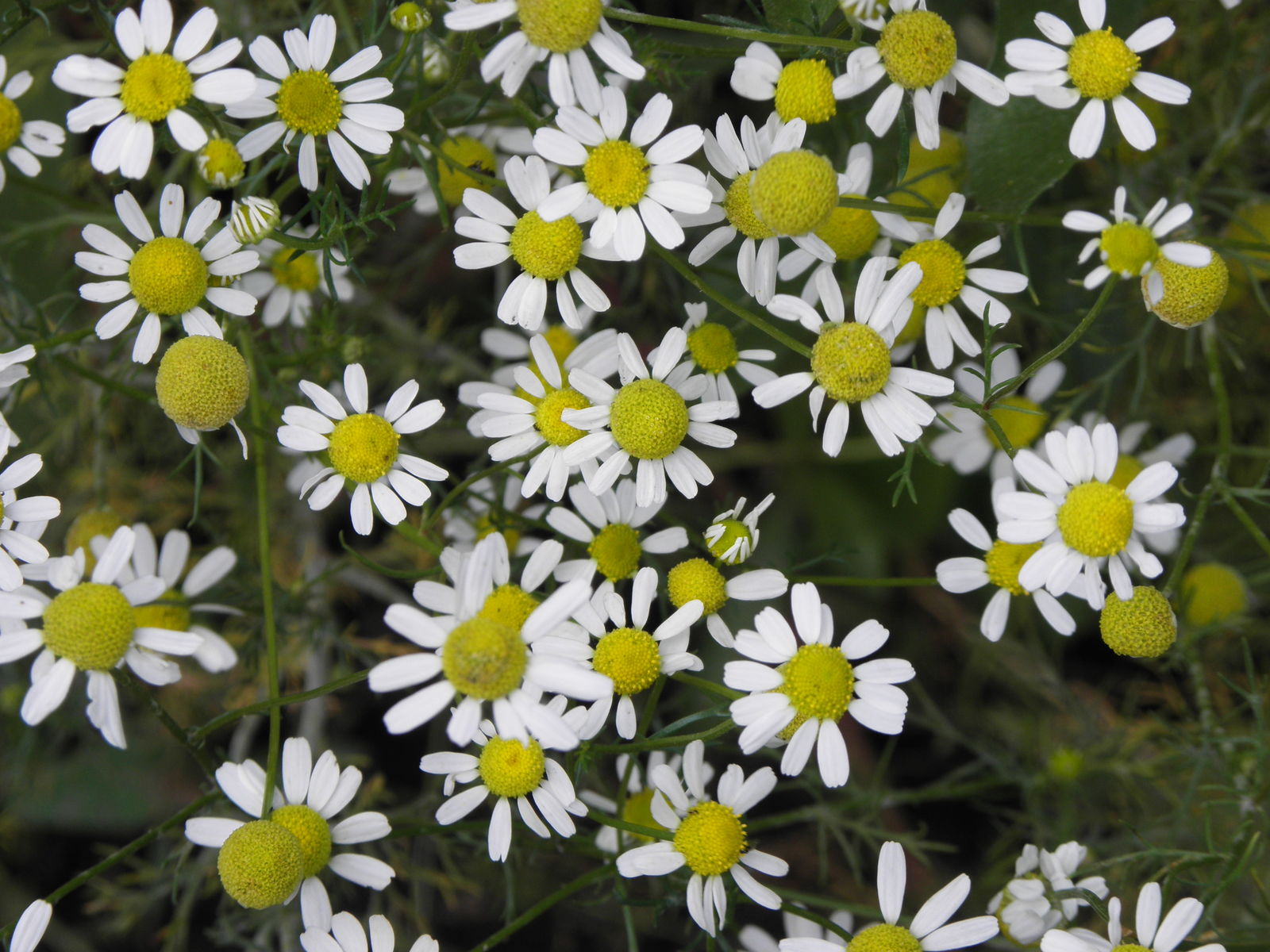
- Primary Uses: Relaxation, sleep support, digestive aid, anti-inflammatory for skin.
- Active Compounds: Contains chamazulene, apigenin, and other flavonoids known to have calming and anti-inflammatory properties.
- Common Preparations: Commonly prepared as a tea infusion. Also available as tinctures, capsules, and topical creams.
- Potential Side Effects: Generally considered safe, but individuals with severe ragweed allergies should be cautious.
Example Use: A soothing chamomile tea before bedtime can help reduce mild anxiety and promote restful sleep.
2. Turmeric (Curcuma longa)
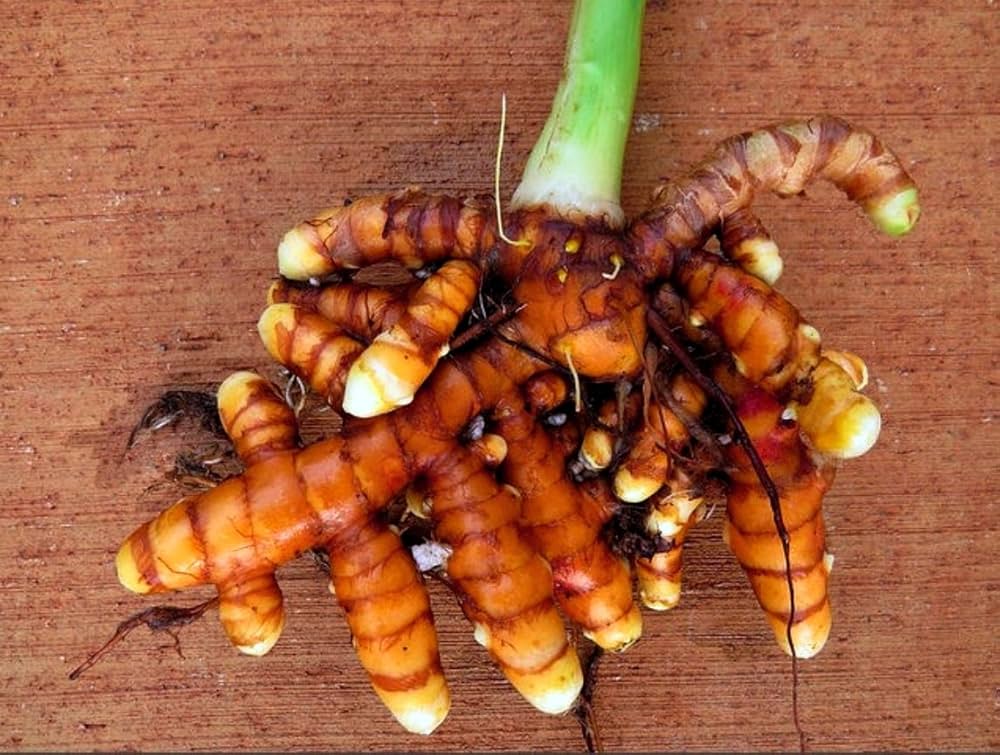
- Primary Uses: Anti-inflammatory, antioxidant, liver support, joint health.
- Active Compounds: Rich in curcuminoids (especially curcumin), which exhibit strong anti-inflammatory and antioxidant activities.
- Common Preparations: Powdered spice for cooking, capsules, tinctures, or extracts.
- Potential Side Effects: High doses may cause stomach upset or interact with anticoagulant medications.
Example Use: Golden milk (a turmeric latte) with black pepper (which boosts curcumin absorption) can reduce inflammation and provide a comforting nighttime beverage.
3. Ginger (Zingiber officinale)
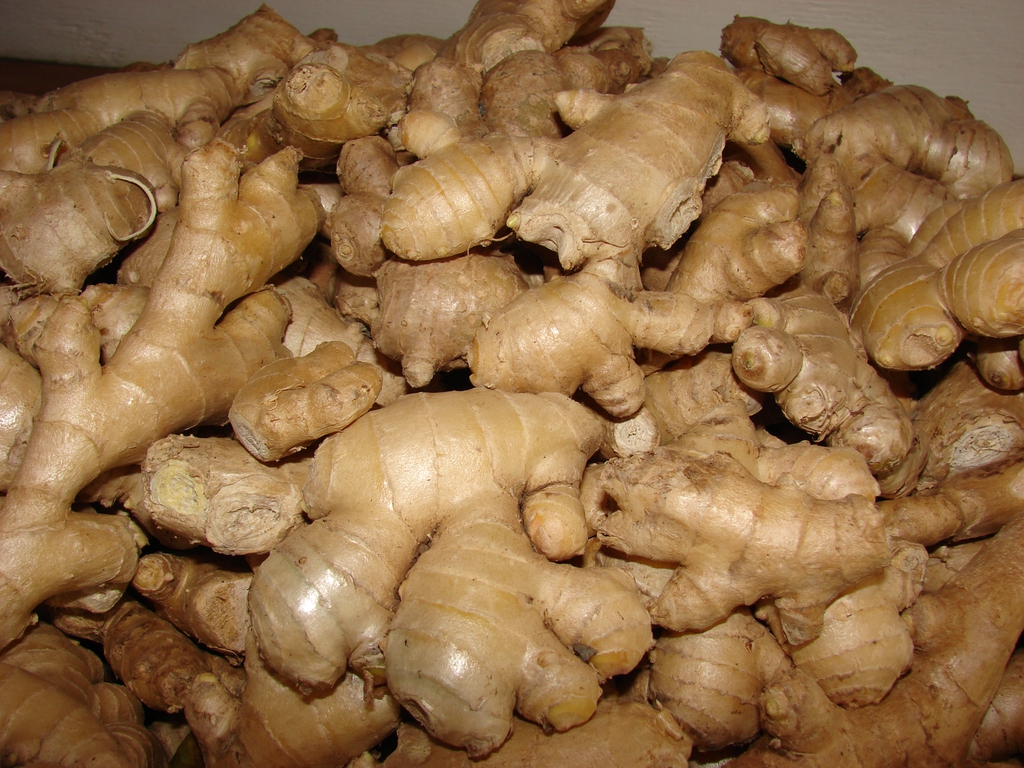
- Primary Uses: Digestive aid (nausea, bloating, flatulence), anti-inflammatory, cold and flu support.
- Active Compounds: Gingerols and shogaols, known to ease digestive discomfort and exert anti-inflammatory effects.
- Common Preparations: Fresh or dried root in teas, capsules, powders, or as an ingredient in cooking.
- Potential Side Effects: Excessive amounts can cause heartburn or mild stomach upset, and it may interact with blood-thinning medications.
Example Use: A cup of hot ginger tea can soothe an upset stomach, and ginger compresses can help alleviate muscle soreness.
4. Tulsi / Holy Basil (Ocimum sanctum)
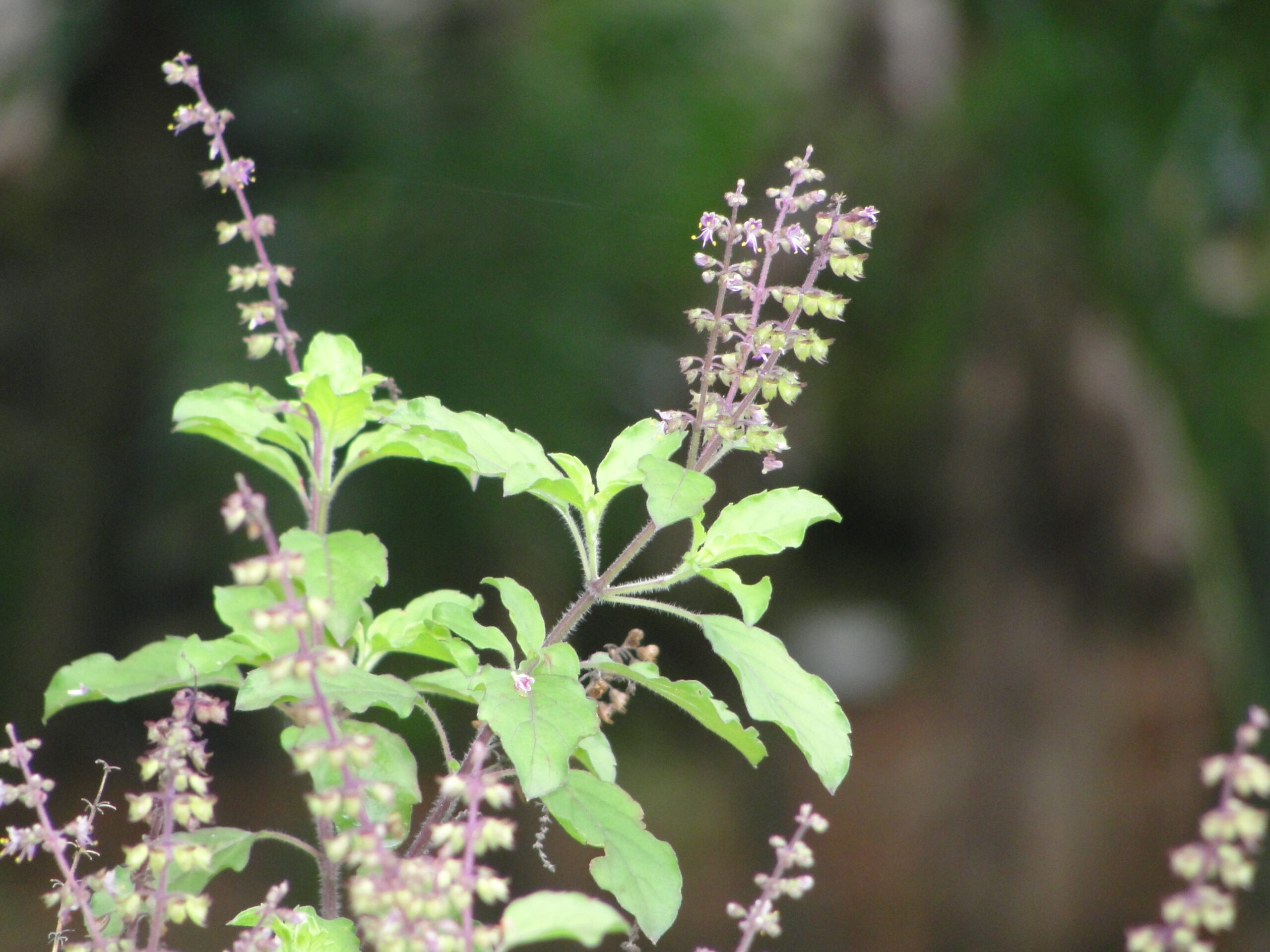
- Primary Uses: Adaptogenic herb used to help the body cope with stress, support immunity, and balance metabolism.
- Active Compounds: Contains eugenol, rosmarinic acid, and ursolic acid, contributing to its stress-relieving and anti-inflammatory properties.
- Common Preparations: Infused as tea, taken in capsules, or used as a fresh herb in cooking.
- Potential Side Effects: Generally safe, but those with low blood sugar should monitor levels as Tulsi can have a mild hypoglycemic effect.
Example Use: Drinking Tulsi tea during periods of high stress can help restore emotional balance and support your immune system.
5. Ashwagandha (Withania somnifera)
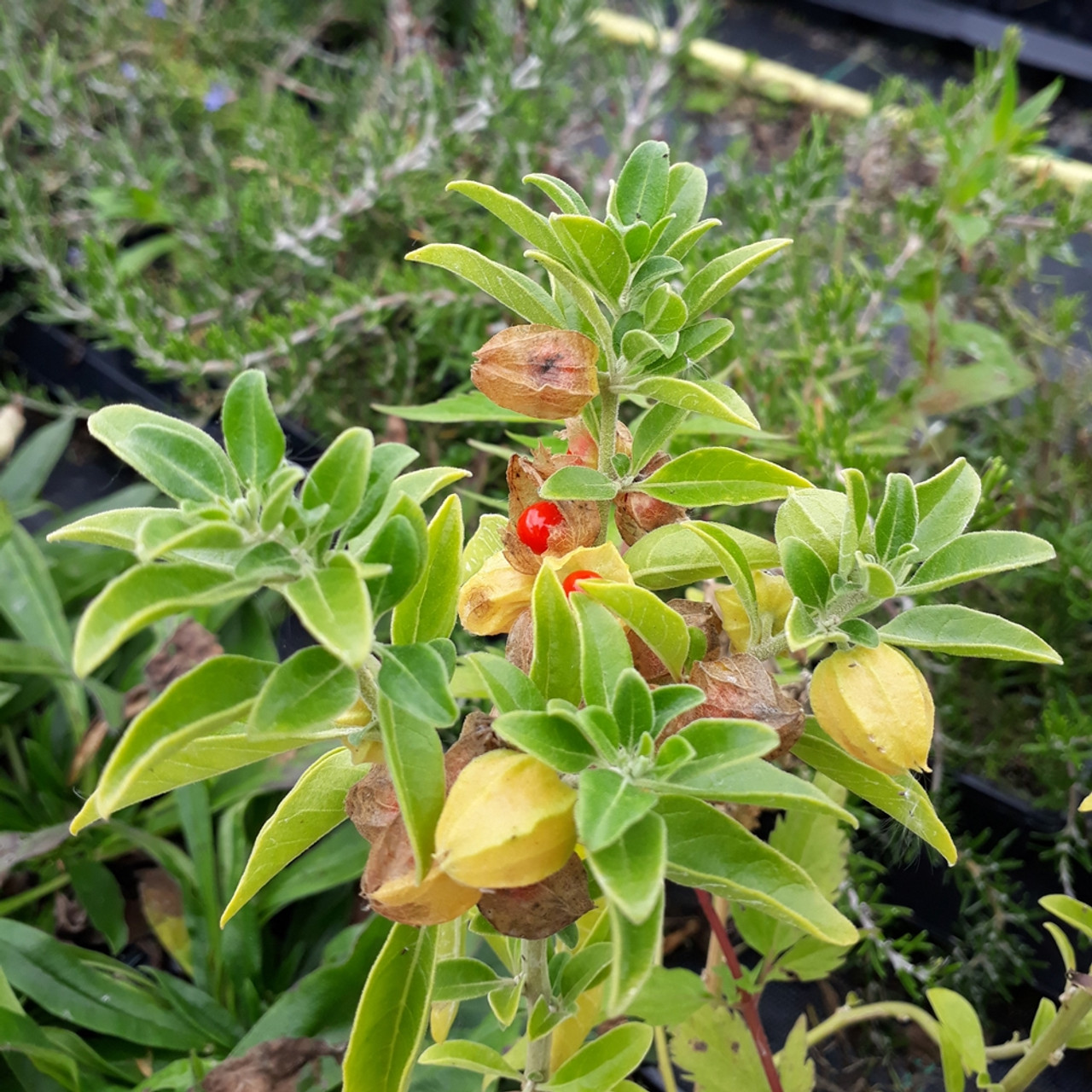
- Primary Uses: Stress relief, energy boost, hormonal balance, adaptogen.
- Active Compounds: Withanolides, known to support adrenal function, reduce cortisol levels, and enhance overall vitality.
- Common Preparations: Powdered root in smoothies, capsules, or tinctures.
- Potential Side Effects: Generally well-tolerated; however, pregnant women and individuals with certain autoimmune disorders should consult a healthcare professional.
Example Use: Incorporating a teaspoon of ashwagandha powder into a warm evening beverage can help reduce stress and improve sleep quality.
6. Garlic (Allium sativum)
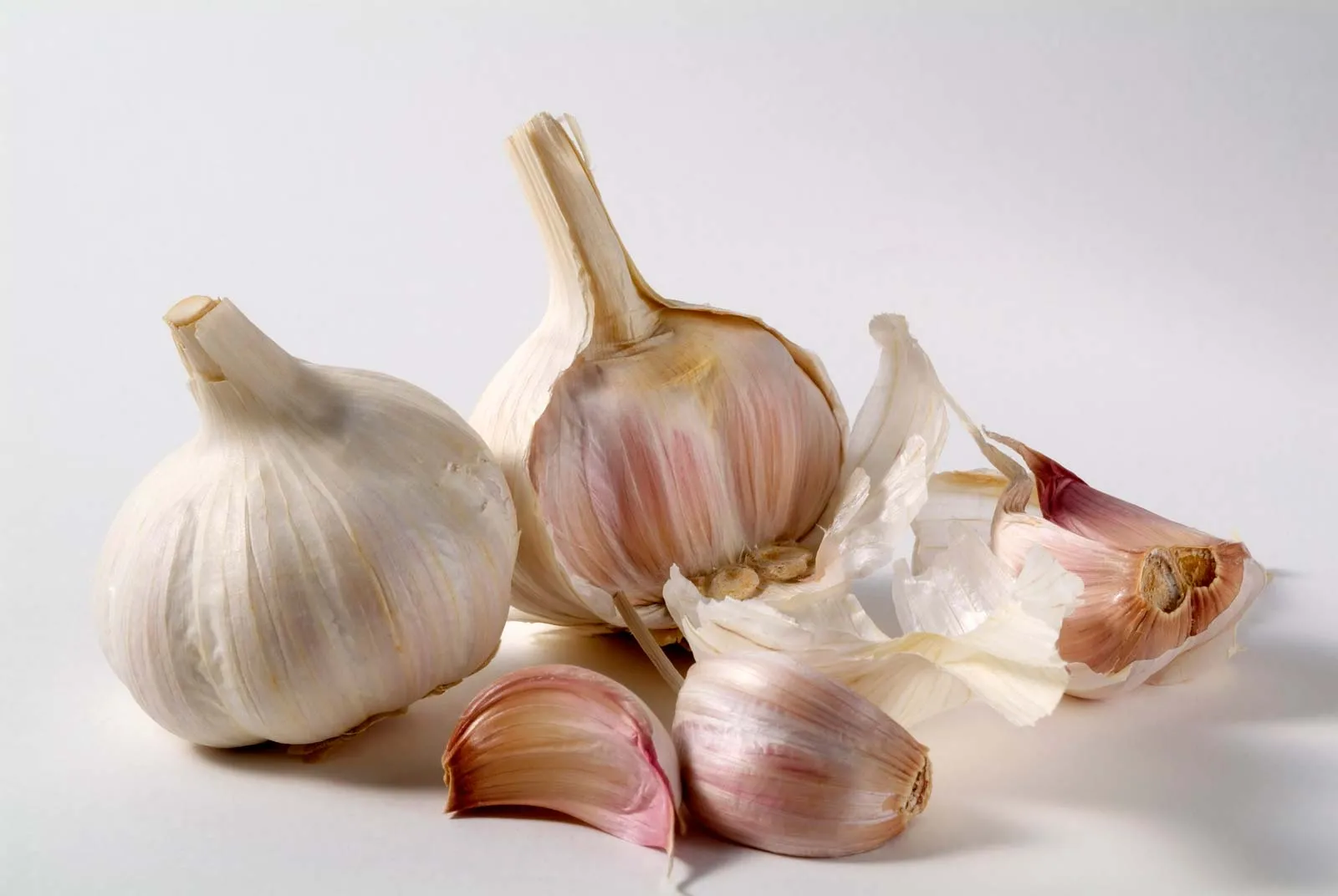
- Primary Uses: Cardiovascular support, immune enhancement, antimicrobial, anti-inflammatory.
- Active Compounds: Allicin, formed when fresh garlic is crushed or chopped, along with sulfur-containing compounds.
- Common Preparations: Raw or cooked in food, capsules, oil-based extracts.
- Potential Side Effects: May cause digestive upset or bad breath. Can interact with blood thinners, so consult a healthcare provider if you are on such medications.
Example Use: Regular inclusion of fresh garlic in your diet may help reduce mild hypertension and support overall cardiovascular health.
7. Aloe Vera (Aloe barbadensis miller)
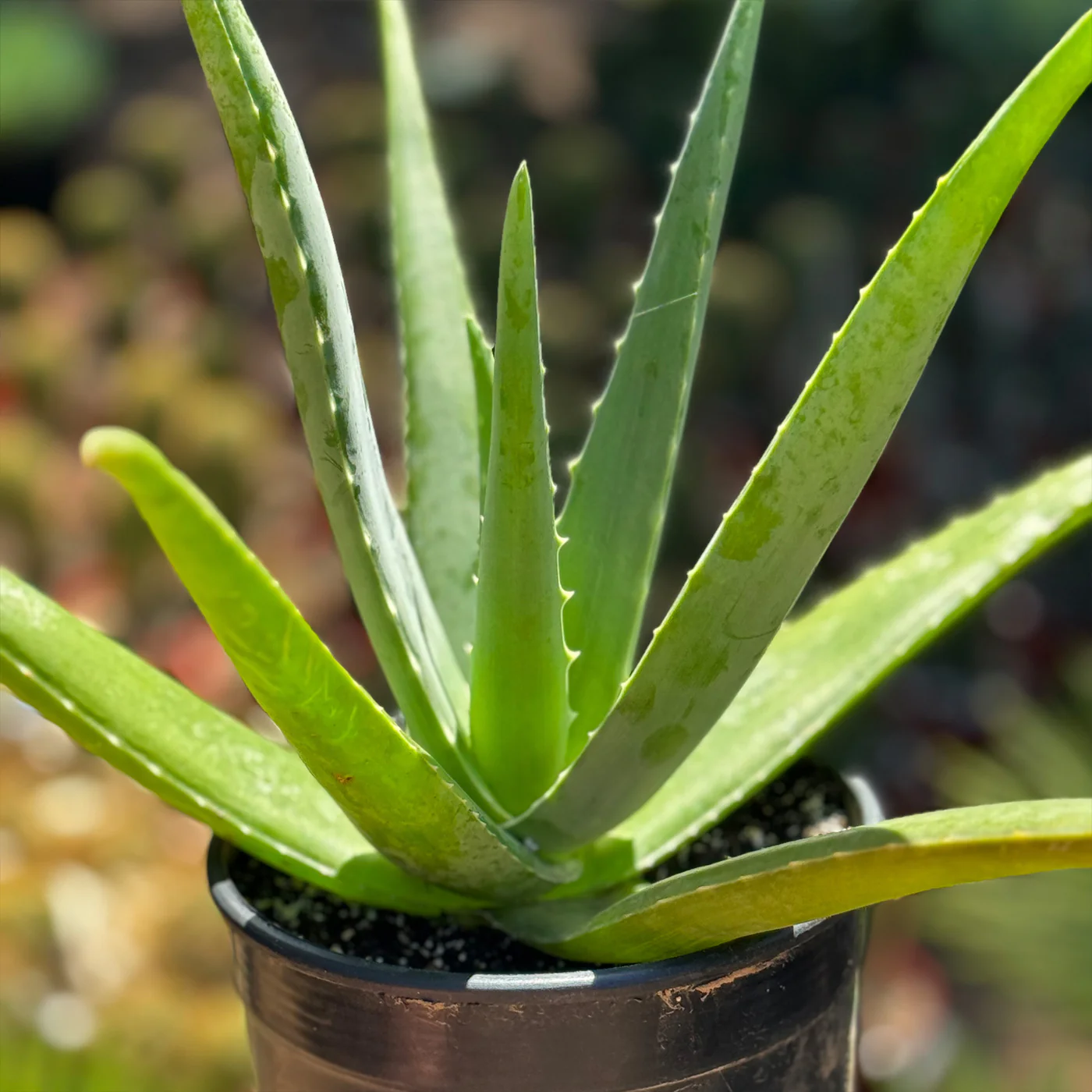
- Primary Uses: Skin healing, wound care, digestive aid (in juice form), anti-inflammatory.
- Active Compounds: Polysaccharides, anthraquinones, vitamins, and minerals.
- Common Preparations: Fresh gel, juices, topical creams, or lotions.
- Potential Side Effects: Some people experience skin irritation. Aloe latex (the yellow sap) can have laxative effects and should be used cautiously.
Example Use: Applying fresh aloe vera gel to minor burns or cuts can promote faster skin healing and reduce inflammation.
8. Peppermint (Mentha × piperita)
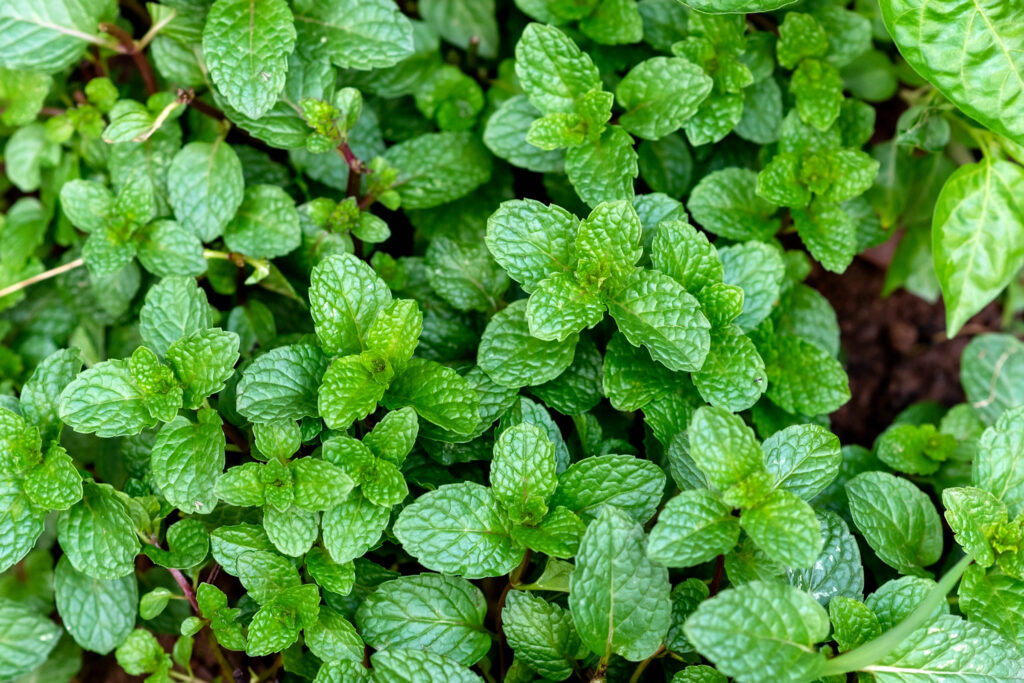
- Primary Uses: Digestive relief, headache relief, respiratory decongestion, calming effect.
- Active Compounds: Menthol, menthone, and other volatile oils that help soothe digestive tract spasms and clear nasal passages.
- Common Preparations: Herbal teas, essential oils, topical lotions, inhalants.
- Potential Side Effects: May irritate sensitive skin when used topically; large oral doses of peppermint oil can lead to heartburn or interact with certain medications.
Example Use: A peppermint steam inhalation can help clear sinuses and soothe respiratory discomfort during colds or allergies.
Popular Methods of Herbal Preparation
Knowing how to prepare herbs can significantly impact their therapeutic effects. Different methods extract different sets of compounds, influencing taste, potency, and usage.
1. Teas and Infusions
- Definition: Steeping herb leaves or flowers in hot water to extract volatile oils and water-soluble constituents.
- Examples: Chamomile tea, peppermint tea, green tea.
- How to Make:
- Boil fresh water.
- Place about 1 teaspoon of dried herbs (or 1 tablespoon of fresh herbs) per cup into a teapot or mug.
- Pour hot water over the herbs.
- Cover and let steep for 5–10 minutes.
- Strain and enjoy hot or cold.
2. Decoctions
- Definition: A method of simmering tougher plant material—like roots, bark, or seeds—to extract water-soluble constituents.
- Examples: Ginger root decoction, licorice root decoction.
- How to Make:
- Chop the root or bark into small pieces.
- Place the herb in a pot with cold water.
- Bring to a boil, then lower to a simmer for 10–30 minutes depending on the herb’s density.
- Strain before drinking.
3. Tinctures
- Definition: Concentrated liquid extracts made by soaking herbs in a solvent, usually alcohol (like vodka) or glycerin.
- Examples: Echinacea tincture, valerian root tincture.
- How to Make (Traditional Alcohol Tincture):
- Fill a jar halfway with dried herb (or two-thirds with fresh herb).
- Pour in alcohol (at least 40% alcohol content) to cover the herb completely.
- Seal the jar, store in a cool, dark place, and shake daily for 2–6 weeks.
- Strain and bottle in dark glass.
4. Poultices and Compresses
- Definition: External applications of herbs directly on the skin to target localized pain or inflammation.
- Examples: Plantain leaf poultice for insect bites, ginger compress for sore joints.
- How to Make:
- Crush or blend fresh herbs into a paste, or soak dried herbs in hot water.
- Apply the moist herb mixture onto a clean cloth or gauze.
- Place onto the affected area and secure with a bandage for 15–30 minutes.
5. Capsules and Powders
- Definition: Dried and ground herbal material encapsulated for oral ingestion.
- Examples: Turmeric capsules, ashwagandha powder.
- How to Use:
- Purchase ready-made capsules from reputable brands, or use empty capsules and fill with powdered herbs at home.
- Follow the recommended dosage guidelines.
6. Essential Oils and Aromatherapy
- Definition: Highly concentrated plant extracts obtained through steam distillation or cold pressing.
- Examples: Lavender essential oil, tea tree essential oil, peppermint essential oil.
- How to Use:
- Diffuse in an essential oil diffuser.
- Dilute a few drops in a carrier oil (like coconut or jojoba) before applying topically.
- Avoid ingesting essential oils unless guided by a qualified professional.
Safety Precautions and Potential Side Effects
Although herbal remedies are natural, they can still produce side effects if used improperly. Some herbal compounds may also interact with prescription or over-the-counter medications. Here are critical safety guidelines:
- Consult Professionals: If you have pre-existing health conditions or are pregnant, breastfeeding, or on medications, speak with a healthcare provider or a qualified herbalist.
- Buy Quality Products: Only purchase herbs and supplements from reputable sources to ensure purity and potency.
- Allergic Reactions: Some individuals may be sensitive or allergic to particular herbs. Start with low doses and monitor for adverse reactions such as rashes, itching, or respiratory issues.
- Correct Identification: If foraging wild plants, ensure you have correctly identified the herb to avoid toxic look-alikes.
- Dosage Matters: More is not always better. Use suggested serving sizes or consult a professional for precise guidance.
- Drug Interactions: Herbs like garlic, ginkgo, and St. John’s wort have known interactions with blood thinners and antidepressants, among others.
By respecting herbal medicine’s potential power and practicing due diligence, you can minimize risks and maximize benefits.
Incorporating Herbal Medicine Into Your Lifestyle

Building a healthy relationship with herbs involves more than just taking a pill or sipping tea occasionally. It’s about understanding the synergy between plants, body, and mind—and integrating these insights into daily routines.
1. Starting with Whole Foods and Simple Remedies
- Upgrade Your Kitchen: Season meals with fresh herbs (basil, rosemary, oregano, etc.) for both taste and potential health benefits.
- Daily Teas: Replace or supplement your morning coffee with herbal teas like ginger, chamomile, or tulsi.
- Simple Steps: Start small—perhaps a nighttime cup of chamomile tea to help relaxation. Build on these habits gradually.
2. Consulting Professionals and Doing Your Research
- Certified Herbalists: If you want a personalized regimen, consult a Registered Herbalist or a professional trained in Ayurveda or Traditional Chinese Medicine.
- Evidence-Based Approach: Rely on well-researched, peer-reviewed articles and books to ensure accuracy.
- Stay Informed: Join local or online communities to learn from collective experiences, but always cross-check with reliable, science-backed sources.
3. Building a Basic Herbal Medicine Kit
Consider having a small “herbal first-aid kit” at home. Some suggestions include:
- Chamomile Tea Bags: For calming digestive upset or nervousness.
- Ginger Tea or Capsules: To alleviate nausea or mild inflammation.
- Turmeric Powder: A versatile anti-inflammatory remedy for cooking or making golden milk.
- Peppermint Essential Oil: Handy for headaches (when diluted) or for aromatherapy to clear sinuses.
- Aloe Vera Gel: Useful for burns, skin irritations, and minor wounds.
- Lavender Essential Oil: Good for relaxation and topical skin use (diluted).
By gradually learning and practicing with these tried-and-true herbs, you’ll grow in confidence and knowledge regarding more advanced preparations and formulations.
Herbal Remedies for Common Everyday Ailments
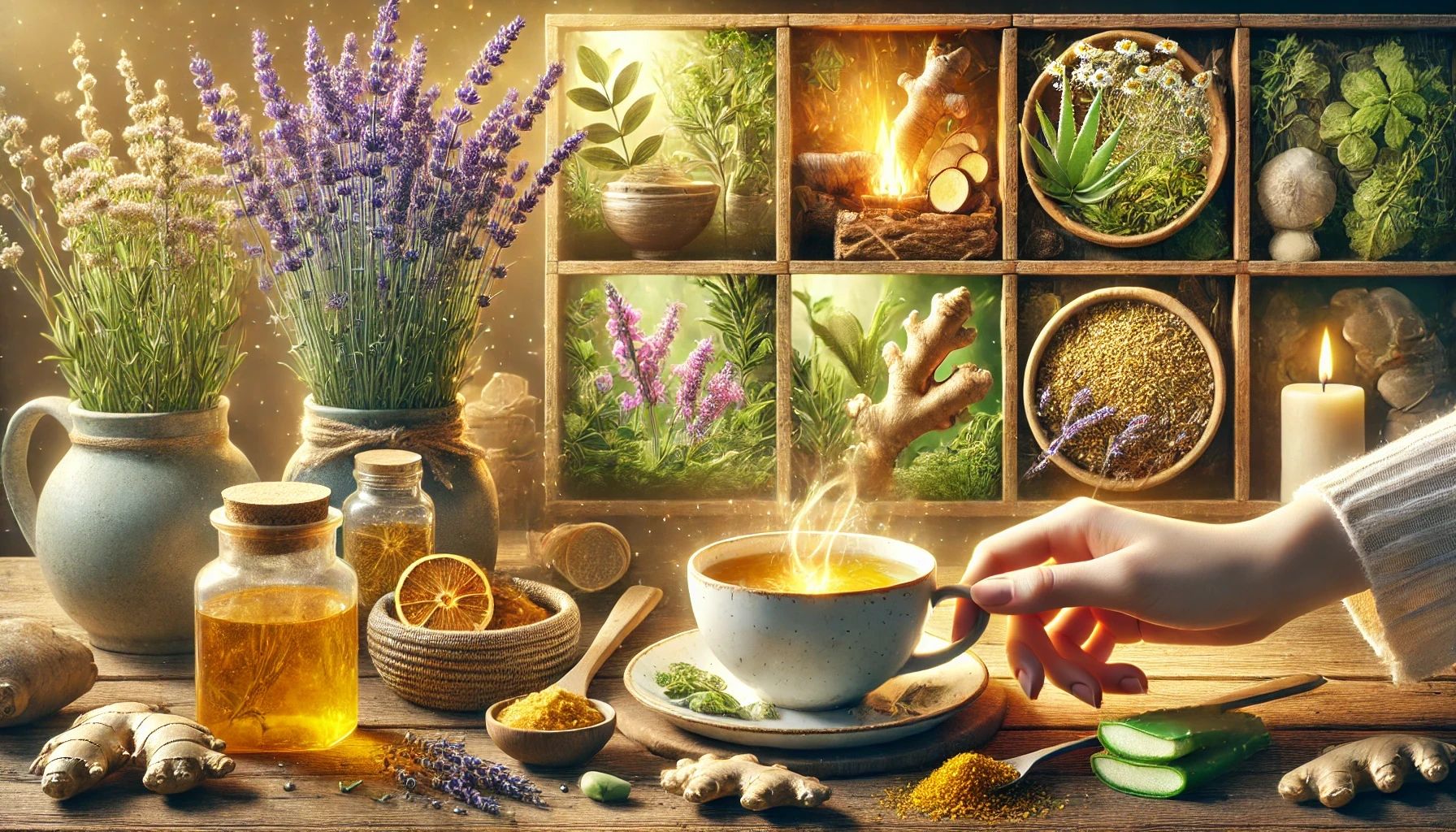
Let’s look at how you might apply herbal remedies to address common health concerns. Remember to consult a healthcare professional if symptoms persist or worsen, as some conditions may require medical intervention.
1. Digestive Issues
- Common Symptoms: Bloating, gas, indigestion, mild nausea.
- Herbal Allies:
- Ginger: Steep fresh ginger root for tea or use capsules.
- Peppermint: A cup of peppermint tea can soothe gas and bloating.
- Chamomile: Calms an irritated stomach and aids digestion.
- Practical Tip: For indigestion, consider a soothing tea blend of chamomile and peppermint after meals to promote relaxation and ease discomfort.
2. Stress and Anxiety
- Common Symptoms: Racing thoughts, muscle tension, restlessness, mild irritability.
- Herbal Allies:
- Tulsi (Holy Basil): Helps modulate stress hormones.
- Chamomile: Calming tea for nervous tension.
- Ashwagandha: Supports adrenal glands and helps balance cortisol.
- Practical Tip: Try a daily adaptogenic blend of ashwagandha and tulsi in warm milk or water. Incorporate mindfulness or meditation for synergistic stress relief.
3. Common Colds and Flu
- Common Symptoms: Congestion, runny nose, sore throat, mild fever.
- Herbal Allies:
- Echinacea (not previously discussed in detail but widely used for immunity).
- Ginger: Antimicrobial and warming properties.
- Garlic: Known for immune-boosting sulfur compounds.
- Peppermint: Helps clear sinuses and soothe headaches.
- Practical Tip: Make a soothing decoction with ginger, garlic, and a pinch of cayenne for congestion. Consider adding lemon and honey to taste.
4. Insomnia and Sleep Disturbances
- Common Symptoms: Difficulty falling asleep, frequent waking, restless nights.
- Herbal Allies:
- Chamomile: Well-known mild sedative effects.
- Lavender: Aromatherapy or mild tea for relaxation.
- Valerian Root (not previously discussed in detail, but recognized for sedative properties).
- Practical Tip: Wind-down routine with a warm bath infused with lavender essential oil, followed by a cup of chamomile or valerian tea 30 minutes before bed.
5. Minor Wounds and Skin Irritations
- Common Symptoms: Cuts, scrapes, mild burns, insect bites.
- Herbal Allies:
- Aloe Vera: Cooling and restorative gel for minor burns.
- Calendula (Marigold): Antiseptic and wound-healing properties.
- Tea Tree Oil: Potent antiseptic (always dilute before applying).
- Practical Tip: Keep a small potted aloe vera in your home for immediate access to fresh gel. Use calendula ointment on superficial cuts for faster healing.
Frequently Asked Questions
1. Is herbal medicine regulated?
In many countries, herbal supplements are regulated as dietary supplements rather than drugs, meaning they are not subject to the same rigorous testing as pharmaceuticals. Always choose reputable, third-party tested brands to ensure safety and quality.
2. Can I grow my own herbs?
Absolutely. Many medicinal herbs like peppermint, basil, or aloe vera can be grown in small gardens or potted containers. Just ensure you research the right soil, sunlight, and watering needs for each plant.
3. How soon can I see results from using herbal remedies?
The timeline varies. Some herbs, like ginger for nausea, can provide quick relief within minutes or hours. Others, such as adaptogens like ashwagandha, may require consistent use over weeks to experience noticeable benefits.
4. Are there any risks with combining herbs and pharmaceutical medications?
Yes. Some herbs may potentiate or diminish the effects of conventional drugs. Always inform your physician or pharmacist about any herbal supplements you’re taking to avoid interactions.
5. Which herbs are safe for children?
Certain mild herbs (like chamomile) can be suitable for children, but dosages must be adjusted for weight and age. Consult a pediatrician or specialized herbal practitioner before giving herbs to children.
6. Can pregnant or breastfeeding women use herbal remedies?
Caution is advised, as certain herbs may not be safe during pregnancy or lactation. Always consult a qualified healthcare professional before use in these situations.
7. What is the difference between an infusion and a decoction?
Infusions are typically made with more delicate plant parts (flowers, leaves) by steeping them in hot water. Decoctions involve simmering harder plant material (roots, bark) to extract active constituents.
Conclusion
Herbal medicine stands as a testament to humanity’s longstanding relationship with the plant kingdom. From ancient civilizations to modern research labs, herbs have proven time and again to be powerful allies in promoting health, preventing disease, and addressing everyday ailments. By integrating reputable knowledge, respecting the potency of botanical compounds, and exercising proper caution, you can harness the many benefits of herbal remedies in a safe, effective manner.
Key Takeaways:
- Herbal medicine is a holistic system rooted in tradition, backed increasingly by modern science.
- Always prioritize quality, correct identification, and proper dosage when working with herbs.
- For everyday issues like digestive complaints, stress, or minor skin irritations, herbal solutions such as ginger, chamomile, tulsi, and aloe vera can be highly beneficial.
- Build a small herbal tool kit and gradually expand it with guidance from trusted experts.
- Herbal medicine works best when integrated into an overall lifestyle of balanced nutrition, mindful living, and regular health check-ups.
As you embark on your herbal medicine journey, stay curious and open to learning. The world of botanical remedies is vast, with each plant carrying centuries of wisdom waiting to be explored. Through informed and intentional use, herbal medicine can become an empowering and transformative element of your daily wellness routine.
